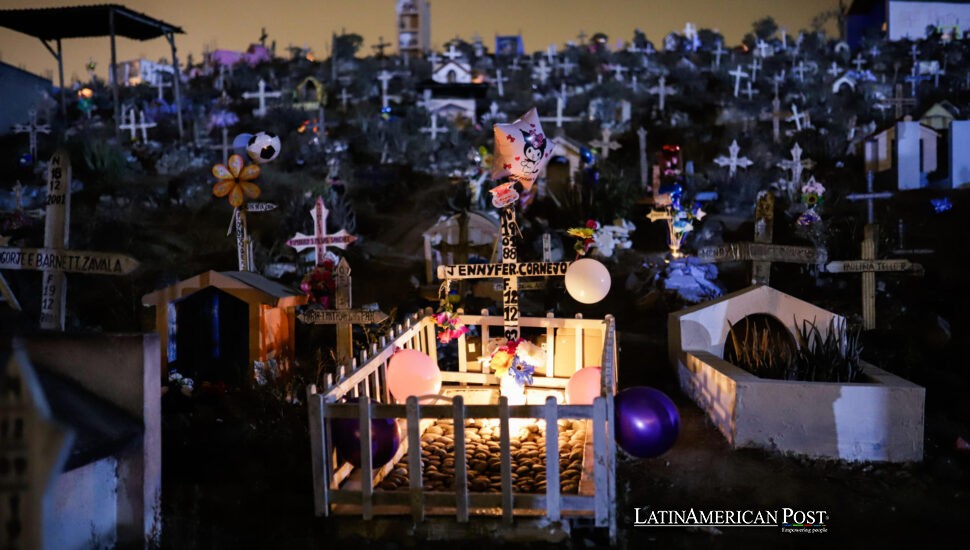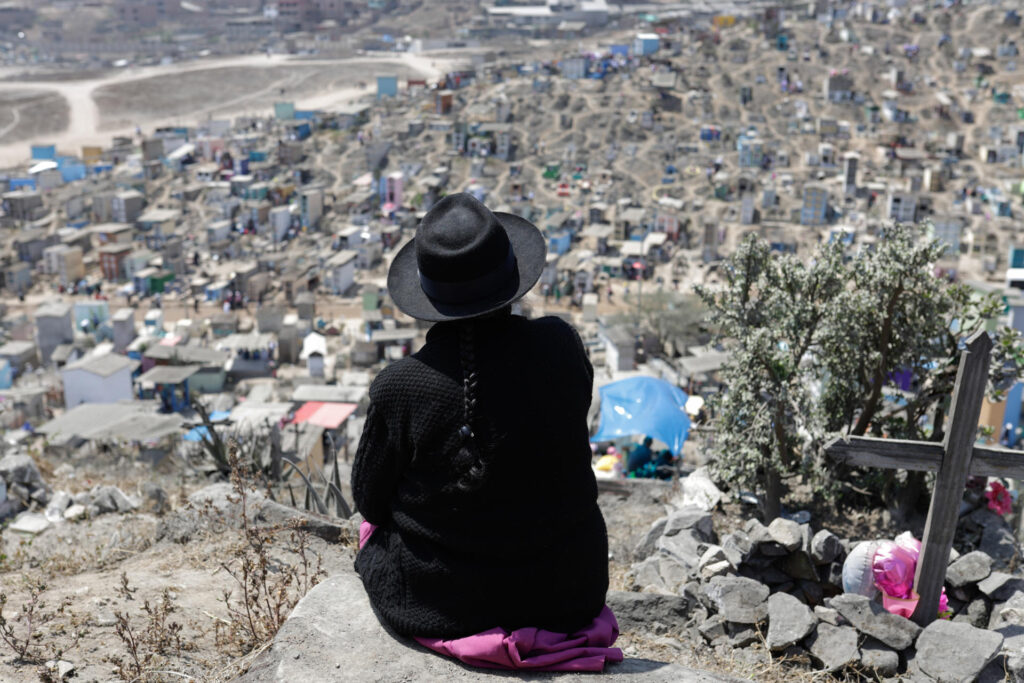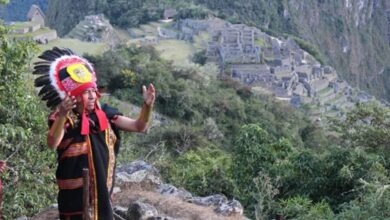Lima’s City of Graves: Where the Dead Refuse Silence

Every year on All Souls’ Day, a city rises from another. South of Lima, where the capital’s concrete gives way to dry hills and wind-carved roads, the Virgen de Lourdes cemetery becomes something electric—a city of the dead that refuses to whisper. Here, grief and joy share the same song sheet. Families bring food, music, paint, and beer. Vendors line the paths. Bands climb through dust to serenade tombs. For one day, silence loses.
A City of Graves That Refuses Silence
Silence doesn’t last long in Villa María del Triunfo, where the Virgen de Lourdes cemetery sprawls across more than sixty hectares of ridges and ravines. Built in 1961 for the migrants who fled the Andes for Lima’s promise of work, it has become a geography of memory—a city within a city, filled with crosses, portraits, and stories written in bright paint.
On November 1, it turns into something alive: a festival of remembrance, a collective defiance of forgetting. Javier Huamán, the district’s social development manager, told EFE that as many as 2 million people pass through during the celebration. “Each area reflects the traditions of its own province. The Huancaíno zone, for example, is very joyful,” he explained.
The crowd isn’t there for spectacle; they’re there for belonging. The cemetery was built for those who came to Lima chasing futures—and now, in death, they gather again, pulling the center of the city back toward its margins. Huamán nods as brass bands thunder through the dust. “People come with sadness, yes, but mostly with joy, because they believe their loved ones live there with them.“
Inherited Migrations, Inherited Rituals
Walking through Virgen de Lourdes is like crossing Peru itself. Children weave between painted niches as buses grind up the inner roads, ferrying families to the farthest corners. Vendors sell pan con chicharrón, ice cream, and cigarettes; violinists tune their instruments in the pause between songs.
Fresh flowers are banned—a dengue precaution—so artificial ones bloom instead, their neon petals glowing against the gray soil. Nearly a million and a half niches fill the slopes, each cared for by families who repaint the walls and sweep the dust away before settling in to talk with their dead.
The ritual feels half domestic, half pilgrimage. “When it rains, the hills bleed color,” says a local vendor, nodding to the painted graves. “It’s like they want to be seen.” And they are. Each brushstroke is a conversation between the living and the gone, an act of defiance against Lima’s fast decay.
Huamán watches as families climb the winding paths with instruments and food. “This isn’t mourning in silence,” he says to EFE. “It’s a celebration that life continues, just in another form.” The cemetery becomes an archive not of loss, but of endurance—a living record of Andean migration translated into the language of the city without losing its melody.

Family Noise, Familiar Love
The Mitma family dances near their father’s tomb, a huayno drifting through the wind from Ayacucho—melancholy, tender, unstoppable. Pilar, the daughter, tells EFE her father came down from the highlands at eighteen to serve in the army, bringing his music with him. “He loved these songs. He said they made him remember where he came from. Today we’re sad, but we dance so he knows we remember him.“
A few terraces above, the Fernández family grills chicken beside a cement cross. Their father died thirty years ago, but still anchors their November. “We invite him to eat with us—tamales, cookies, beer, and his cigarette,” the eldest son says, pouring a drink onto the ground. The smoke, the music, the food—all of it is language. In this place, grief doesn’t whisper; it sings.
The small gestures matter most: brushing dust from a nameplate, setting a chair beside the tomb, lighting a candle as the wind threatens to snuff it out. Around them, thousands of other families do the same. The cemetery hums with overlapping conversations, laughter, prayer, and gossip. A child runs past with a balloon; a woman cries softly as a harp begins to play.
The scene looks chaotic to outsiders. To those who belong, it’s order—the rhythm of memory kept alive by touch and noise.
The Joyful Politics of Remembrance
The Virgen de Lourdes cemetery is not chaos. It is choreography—one that turns mourning into community and exclusion into claim. For decades, Lima’s Indigenous and provincial migrants were treated as intruders in the capital’s story. But here, on this hillside, they have built their own narrative of belonging.
Allowing “cultural expressions,” as Huamán calls them, is not just municipal tolerance—it’s justice. When families repaint graves and sing through tears, they are performing an act of civic resistance. They are saying, “We are here.” Our dead are here. We belong to this city too.
Rules exist—no natural flowers, for health’s sake—but even that prohibition blooms into creativity. Plastic garlands blaze against the dust, a kind of stubborn hope. Vendors sell grilled meat, panpipes wail over bass drums, and a teenage couple dances between rows of tombs. From afar, it may look unruly, but it is unity made visible.
By dusk, the air turns gold. The last buses crawl up the hills, horns echoing between terraces. Somewhere, a harp fades into laughter. The living and the dead are momentarily inseparable—a communion of memory and noise.
As the sun slips behind Lima’s smoggy edge, the music softens but never stops. Virgen de Lourdes is proof that remembrance doesn’t belong to marble statues or quiet prayers—it belongs to people who refuse silence.
Here, love is noisy, grief is crowded, and memory is a public event. The families who built the city’s outskirts have built their afterlife too, one melody, one beer, one brushstroke at a time.
In this city of graves, the dead don’t rest alone—they rest accompanied, serenaded, and never forgotten.
Also Read: Peru’s Criollo Comeback: How La Victoria’s Music Scene Is Beating Halloween at Its Own Game





